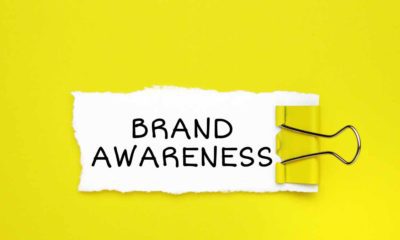Featured
What Is Conversion Rate (CVR) In Digital Marketing?
In the world of digital marketing, conversion rate is one of the most important metrics that businesses need to keep an eye on. It represents the percentage of website visitors who take a desired action. Such as making a purchase or filling out a form.
To measure conversion rates, businesses use a tool called Conversion Rate Optimization (CRO). This focuses on improving the website’s ability to convert visitors into customers.
In this article, we’ll delve into the concept of CVR (Conversion Rate) and how it can help businesses optimize their conversion rates.
Understanding the Basics of Conversion Rates
Before diving into CVR, it’s important to understand the basics of conversion rates. A conversion rate is simply the percentage of website visitors who take a desired action on a website, such as making a purchase, filling out a form, or downloading a whitepaper. Conversion rates can vary significantly depending on the industry, the type of website, and the desired action
For example, a conversion rate of 3% may be considered high for an e-commerce website. But it could also be considered low for a lead generation website. A high conversion rate indicates that the website is effectively converting visitors into customers, while a low conversion rate indicates that there is room for improvement.
What is CVR in Digital Marketing?
CVR, or Conversion Rate, is a metric that measures the variation in conversion rates between two or more versions of a website, landing page, or marketing campaign. In other words, CVR measures the difference in conversion rates between a control group and a test group.
For example, let’s say a business wants to test two different versions of their landing page to see which one converts better. They create a control group (the original landing page) and a test group (the new landing page) and measure the conversion rates of both groups. CVR is the difference in conversion rates between the control group and the test group.
CVR is important because it helps businesses optimize their website, landing pages, and marketing campaigns for higher conversion rates. By testing different variations and measuring the differences in conversion rates, businesses can identify which elements are working and which need improvement.
How to Calculate CVR
Calculating CVR is relatively simple. First, you divide the number of users who converted by the number of users who clicked on the ad, and then multiply it by 100.
The result is the CVR.
For example, if 1000 users viewed your ad, and 10 of them converted, the result would be a CVR of 1.0%. This means that your ad converted 1% of users who saw it.
CVR = (Number of users who took desired action / number of users who clicked the ad) x 100.
Importance of CVR in Digital Marketing
CVR is important because it helps businesses optimize their conversion rates and improve their ROI. By testing different variations of their website, landing pages, and marketing campaigns, businesses can identify which elements are working and which need improvement.
For example, if a business tests two different versions of its landing page and sees a significant increase in conversion rates with the new version, it can implement the changes on its main landing page and improve its overall conversion rate.
[Read More] What Is Marketing Attribution? Your Must-Read Guide
Examples of CVR
There are many examples of CVR in digital marketing. One common example is A/B testing. This involves testing two versions of a website or landing page to see which one performs better. Another example is multivariate testing, which involves testing multiple variations of different elements on a website or landing page to see which combination performs the best.
For example, a business may test two different headlines, two different images, and two different call-to-action buttons on their landing page to see which combination results in the highest conversion rate. By analyzing the results of the tests, they can identify the winning combination and implement it on their main landing page.
How to Improve CVR
Improving CVR involves a combination of testing and optimization. Here are some tips for improving CVR:
- Identify the problem: Before testing different variations, identify the problem you’re trying to solve. Is your website’s bounce rate too high? Are visitors abandoning their shopping carts? By identifying the problem, you can create hypotheses for improving the conversion rate.
- Test different variations: Once you’ve identified the problem, test different variations of your website or landing page to see which one performs the best. Start with small changes. For instance, the headline or call-to-action button, and gradually work your way up to larger changes, such as the layout or design.
- Analyze the results: After testing different variations, analyze the results to identify the winning combination. Look for patterns and trends in the data to identify what’s working and what’s not.
- Implement the changes: Once you’ve identified the winning combination, implement the changes on your main website or landing page.
- Repeat the process: CVR is an ongoing process. Keep testing and optimizing your website or landing page to improve your conversion rates over time.
Best Practices for Implementing CVR
Here are some best practices for implementing CVR:
- Set clear goals: Before testing different variations, set clear goals for what you want to achieve. This will help you stay focused and measure the success of your tests.
- Test one element at a time: When testing different variations, test one element at a time. This will help you identify which element is driving the changes in conversion rates.
- Use statistical significance: When analyzing the results of your tests, use statistical significance to determine if the results are meaningful. This will help you avoid making changes based on random fluctuations in the data.
- Keep testing: CVR is an ongoing process. Keep testing and optimizing your website or landing page to improve your conversion rates over time.
Common Mistakes to Avoid When Implementing CVR
Here are some common mistakes to avoid when implementing CVR:
- Testing too many variations at once: When testing different variations, it’s important to test one element at a time. Testing too many variations at once can make it difficult to identify which element is driving the changes in conversion rates.
- Not testing for long enough: When testing different variations, it’s important to test for a sufficient amount of time to ensure the results are meaningful. Testing for too short of a time can result in inaccurate results.
- Not using statistical significance: When analyzing the results of your tests, it’s important to use statistical significance to determine if the results are meaningful. Failing to do so can result in changes based on random fluctuations in the data.
Tools for Measuring and Analyzing CVR
There are many tools available for measuring and analyzing CVR. Some popular tools include Google Analytics, Optimizely, VWO, and Crazy Egg. These tools allow businesses to test different variations of their website or landing page and analyze the results to identify which elements are driving changes in conversion rates.
Google Analytics, for example, allows businesses to set up A/B tests and track the performance of different variations. It also provides insights into user behavior and demographics, which can help businesses make informed decisions about their website or landing page.
[Read More] Marketing Funnels: What Are They & How Do They Work
The Future of CVR in Digital Marketing
As digital marketing continues to evolve, CVR will become an increasingly important metric for businesses to track. With the rise of AI and machine learning, businesses will be able to optimize their conversion rates in real time, using data and insights to make informed decisions about their website or landing page.
Challenges with CVR
While CVR can be a powerful tool for optimizing conversion rates, it also has its challenges. One of the biggest challenges is the potential for false positives, where a change in conversion rates is attributed to a specific element, when in reality it may be due to other factors, such as seasonality or changes in user behavior.
Another challenge is the potential for test fatigue, where users become accustomed to seeing different variations and stop engaging with the website or landing page altogether.
Bottom Line
In conclusion, CVR is a powerful tool for optimizing conversion rates in digital marketing. By testing different variations and measuring the differences in conversion rates, businesses can identify which elements are working and which need improvement.
However, it’s important to approach CVR with a clear understanding of the goals and potential challenges and to use best practices for testing and optimization.
FAQs
1. Can CVR be used for non-digital marketing channels?
Yes, CVR can be used for non-digital marketing channels as well, such as direct mail or print advertising. The concept of testing different variations and measuring the differences in conversion rates applies to any marketing channel.
2. How long should a CVR test run for?
The length of a CVR test depends on the amount of traffic and conversions the website or landing page receives. As a general rule, a test should run for at least one to two weeks to ensure that the results are statistically significant.
3. How many variations should be tested at once?
It’s best to test one variation at a time to ensure that changes in conversion rates can be attributed to a specific element. However, if there are multiple elements that need to be tested, it’s possible to test up to three variations at once.
4. How can I ensure that my CVR tests are accurate?
To ensure that your CVR tests are accurate, it’s important to use statistical significance to determine if the results are meaningful. This involves calculating the probability that the differences in conversion rates are due to chance. Rather than the changes being tested.
Brett Heimann is a marketing & advertising professional with 10 years of experience. He's the founder of MarketingAgency.com and contributes to other publications such as; Entrepreneur, Thrive Global, and StockMarket.com. His passion for digital marketing began after graduating with a B.S.B.A in business administration and finance in 2013. After completing college, he went on to become an entrepreneur in the marketing and finance space. Brett loves the ability to deliver to his readers engaging and educational content that can be easily consumed by the reader. He enjoys writing about a wide variety of marketing topics such as; Search Engine Optimization (SEO), Paid Advertising (PPC), E-Commerce, and Lead Generation For SMBs to name a few. Brett, a South Florida native, enjoys spending time with his wife and two sons outdoors and is a big basketball and MMA fan.











